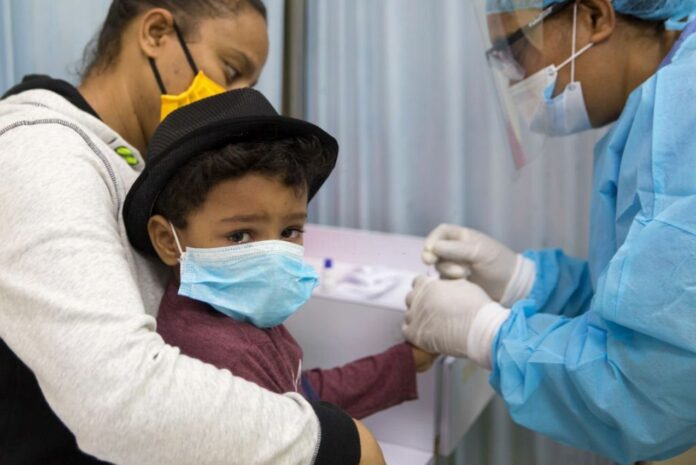Some rare heart conditions such as Kawasaki disease, heart failure or congenital heart defects in kids can make them more likely to get blood clots, which can sometimes lead to a stroke, heart attack, or pulmonary embolism.
To stop this, kids may need to take blood-thinning drugs like heparin or warfarin for the rest of their lives.
While these drugs are effective at preventing clots, they can pose other problems, especially for young patients. Injections of heparin are necessary twice daily.
Warfarin, an oral pill that prevents the production of proteins necessary for blood clotting by vitamin K, necessitates frequent blood tests, dosage adjustments, and dietary changes to prevent food interactions.
Edoxaban, an oral pill used once daily that is both an anticoagulant and a direct factor Xa inhibitor, acts directly on the coagulation mechanism and does not call for frequent blood testing.
The U.S. Food and Drug Administration (FDA) has previously given edoxaban its nod for use in preventing stroke in persons with atrial fibrillation, pulmonary embolisms, and blood clots in deep veins following leg surgery.
Edoxaban’s side effects can include slower-clotting bleeding, easier bruising, skin rash, decreased liver function, and low red blood cell counts (anemia).
The results of new study “point to edoxaban as a new and, perhaps, better alternative to the current medications and may improve quality of life for these children,” according to lead author Michael A. Portman.
“A once-a-day, oral anticoagulant would be a distinct advantage for children and families,” adds the lead author, as it eliminates “injections and reduce the need for frequent blood tests.”
The current investigation into the safety of edoxaban in children was undertaken at centers in the United States, Canada, Austria, Germany, Egypt, India, Israel, France, Poland, Hungary, Ukraine, Great Britain, Lebanon, Russia, and Italy, among others.
Between May 2018 and September 2021, researchers examined 168 kids under the age of 18 (average age 8 years, 65% male, 71% white).
Each child had heart problems and was being treated according to industry standards to help keep their blood from clotting (either heparins or warfarin).
Heart conditions in the children in the study included Kawasaki disease, which causes inflammation in the heart’s blood vessels and sometimes bulging, weakened artery walls, which raises the risk of blood clots in the arteries that bring oxygen-rich blood to heart tissue; having only one side of the heart work properly since birth and having open heart surgery (the Fontan procedure) to make one side of the heart do the work of two; and heart failure, which is very common.
Edoxaban was given to two-thirds (112) of the children at random, with the dosage determined by their weight and age.
The remaining 36 patients continued to receive either heparin or warfarin as their routine of care.
The children were intensively monitored for three months during the primary research, which included monthly clinical visits, symptom histories, and echocardiograms.
All trial participants were given the option to continue taking edoxaban for an additional nine months with ongoing clinic visits and monitoring after the initial three months.
To compare how safe edoxaban is compared to standard treatment, all of the children were observed for clinically significant bleeding that needed treatment. This means bleeding that was more serious than a minor nosebleed or an extra-heavy period.
All trial participants underwent monthly echocardiography screenings, which were used to look for blood clots that could cause stroke, pulmonary embolism, heart attacks, or clogs in the heart’s arteries.
The main results of the study are:
One child in each of the two therapy groups (usual treatment vs. edoxaban) had bleeding that needed to be treated but wasn’t serious.
Both groups experienced the same number of negative outcomes, including gastrointestinal upset and common cold-like symptoms.
One child who received the usual medicine experienced clots in the lungs and legs.
One child who took part in the extended 9-month period of monitoring while taking edoxaban experienced bleeding after trauma that required medical attention, two experienced strokes, and two developed blood clots in their coronary arteries.
“Cases of bleeding and clotting were very rare in both the edoxaban and standard care groups with only one clinical bleeding even in each group,” points out Portman.
“The data indicate,” according to the author, “edoxaban did just as well at keeping bleeding and clotting instances rare, which is important in considering it as a viable alternative to current treatments.”
Since there were comparable drops in clots in both groups, it was not possible to measure how well edoxaban prevents clots in this trial.
Compared to trials with a larger adult population, the number of participants in the pediatric trials was relatively low because these disorders are rare in children.
However, according to Portman, the rate of clot formation identified in this study was equivalent to that which was previously noted in a few retrospective studies of kids getting routine care.
In addition to the study’s modest size, another limitation is the absence of a control group that received conventional care throughout the study’s prolonged observation period of 9 additional months.
“If a child is having difficulty with anticoagulant treatment – for instance becoming tired of the twice-daily injections,” adds the lead author, “it would be reasonable to discuss with the child’s physician or health care team about whether edoxaban is an option.”
The FDA has not yet approved edoxaban for use in children.
Image Credit: ERIKA SANTELICES/AFP via Getty Images
You were reading: Once-a-day Pill Works Well For Kids With Rare Heart Conditions
